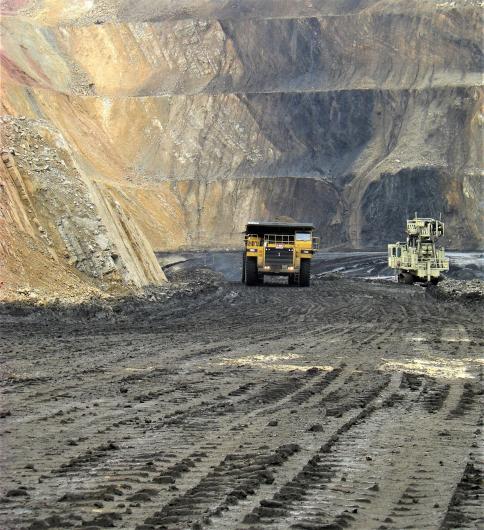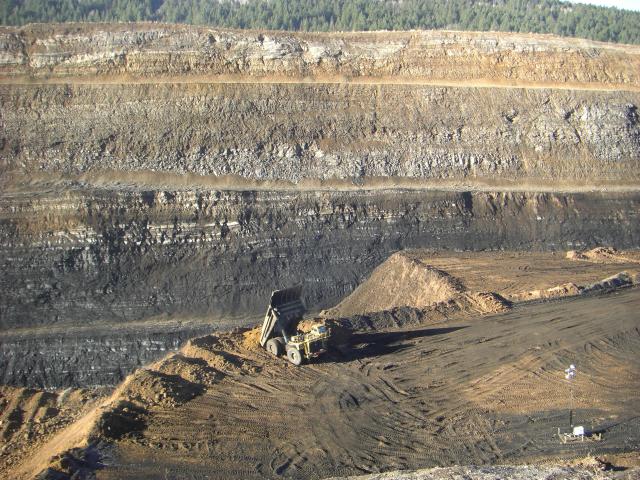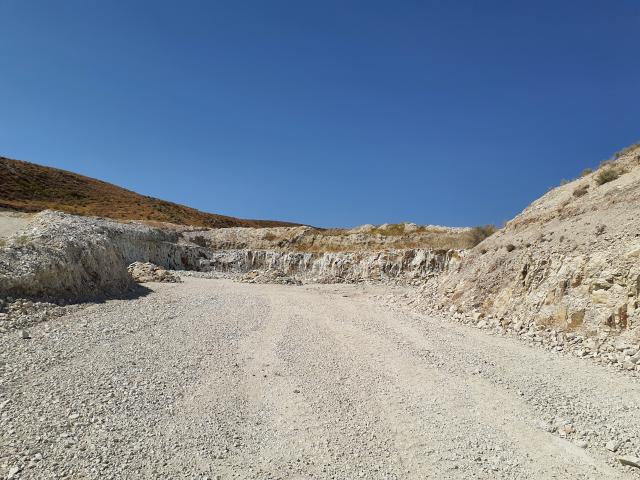BLM Idaho Mining and Minerals
Idaho Mining: Idaho Rocks! The Gem State!
The BLM manages nearly 12 million acres of public lands in Idaho and approximately 36.5 million subsurface acres, nearly one-fourth of the state's total surface land area for multiple uses. One of those important uses is a range of mining programs that play an important role for Idaho’s economy, generating $394 million in revenue in 2023. From small, community-focused operations like shared sand and gravel pits to large phosphate operations, the BLM responsibly serves our community members' needs at all scales. To learn more about these different programs and how you can access these resources, continue reading below.
Interested in rockhounding? Idaho is known as the Gem State for a reason – according to National Geographic, 72 different types of gemstones can be found in Idaho. Check out Rockhounding on Public Lands to find out what and where you can collect from BLM-managed public lands.
- Leasable Minerals: Phosphate and Geothermal
Dry Valley Mine in 2010. Owner at the time was Agrium Conda Phosphates. Site now reclaimed. Lease held by P4 Production. While Leasable Minerals cover a large range of minerals (including oil and gas, coal, and sodium), phosphate and geothermal are the two most notable programs for BLM in Idaho. In fact, mineral leasing on public lands directly benefits the community. For geothermal leasing, of all monies collected for each parcel (bid, rental, and royalties), 50% goes to the state of Idaho, 25% goes to the county where the lease is located, and the remaining 25% goes to the U.S. Treasury. For phosphate leasing, of the monies collected, 40% goes to the Federal Land and Water Conservation Fund, 50% to the state where the lease is located, and 10% to the U.S. Treasury. Additionally, mineral lessees are required to provide a bond to ensure that the lessee meets all reclamation and leasing requirements.
Individuals interested in phosphate or geothermal permitting or leasing are welcome to contact the field office with jurisdiction for exploration permitting or the Idaho State Office for leasing.
You can keep track of existing geothermal lease nominations on the National Fluid Lease Sale System (NFLSS) as well as upcoming lease sales on Idaho Geothermal Energy, or energynet.com.
------------------------------------------------------------------------------------------------------------------------------------
Phosphorus is an important industrial commodity and an essential nutrient for all life, including agricultural crops. Phosphate mining and processing in Idaho contribute $2 billion in value-added products to the U.S. economy and directly employ over 1,200 people in high-paying jobs. Phosphates are used in an array of products, from baked goods and personal care products to fertilizers, textiles and electronics, among others.
Phosphate mining has been an important industry in southeast Idaho since the early 1900s. Today, southeast Idaho's open-pit phosphate mines supply approximately 22-25% of the nation's and 2-4% of the world's phosphate. The BLM Pocatello Field Office is situated at the heart of the Western Phosphate Field – the largest remaining phosphate deposit in the U.S. The BLM in Idaho oversees 86 active phosphate leases in eastern Idaho on a total of 44,000 acres. In 2017, Idaho produced 6 million tons of ore. In 2018, direct contribution to labor income from non-metallic mining in Idaho totaled $282 million.
Depending on conditions, each company produces about 2 million tons of phosphate rock annually. In 2023, the phosphate industry paid approximately $10.5 million in federal royalties. The federal government returns 50% of the federal royalties collected to the state of Idaho. Ten percent of this amount is earmarked for distribution to the county where the mining occurred, and the remaining 90% is typically used for education. In addition, per the Idaho Mine License Tax, the phosphate industry pays tax to the State of Idaho at a rate of 1% of the value received from mining.
- Locatable Minerals
BLM Idaho Zeolite mining area. Locatable minerals include most metallic minerals such as gold, silver, copper, and molybdenum, and industrial minerals like zeolites. Certain uncommon nonmetallic minerals distinguished by unique properties that give the deposit a distinct and special value—such as high-calcium limestone or specialty stones—may qualify as locatable minerals. These minerals are governed by the Mining Law of 1872, as amended.
As of 2025, BLM Idaho oversees an impressive portfolio of more than 40,000 active mining claims, 39 authorized plans of operation, and 32 active exploration notices. The BLM Idaho locatable minerals program manages federal mining claims, conducts mineral surveys, validates title evidence, reviews mineral validity reports, and oversees federal mineral contest actions. Responsibilities also include administering regulations for Surface Management at 43 CFR 3809 and Use and Occupancy under the Mining Laws at 43 CFR 3715.
It's important to note that no royalties are owed to the federal government for the extraction of locatable minerals. However, BLM authorization must be obtained prior to conducting exploration—meaning, creating surface disturbance greater than casual use—and before initiating mining operations on BLM-managed public lands. The designated operator for an exploration or mining operation is responsible for reclamation of any land that is disturbed and is required to include a reclamation plan and supply a financial guarantee (reclamation bond) to the BLM. See Financial Guarantees brochure for more information.
To claim a possessory right to a valuable mineral deposit discovered during exploration, a claimant must locate a mining claim, record it in the relevant county, and submit a copy to the appropriate BLM State Office. The holder of an unpatented mining claim must pay a maintenance fee on or before September 1 of each year to hold a claim for the upcoming assessment year. See further details on filing mining claims.
- Mineral Materials: Sand, Gravel, Cinders, Clay, Lava Rock, and other Construction Materials
Mineral Materials are often described as “construction materials.” These minerals are used for road base in support of other mining operations, driveway improvements, landscape rock, and building materials amongst others. The BLM maintains community pits that, with a permit, are open to the public for a reasonable, Fair Market Value cost. By making mineral materials available and affordable, the BLM supports local economies, while providing responsible stewardship of public lands. In fact, all the sales collected for mineral materials goes back to the U.S. Treasury, and all reclamation fees go into a mineral material site reclamation fund to make sure public lands are properly reclaimed once a pit is closed.
For a list of all community pits, as well as their locations, costs, and materials offered, check out Idaho Community Pits. Permits for community pits can be obtained at the front desk in the field office where the community pit is located. Here's contact information for field offices.
An individual or business is welcome to submit a request for a new mineral material site for their own use. These requests can be made to the field office with jurisdiction (see links above). Each field office will be able to guide you through the process to obtain a mineral material permit.



